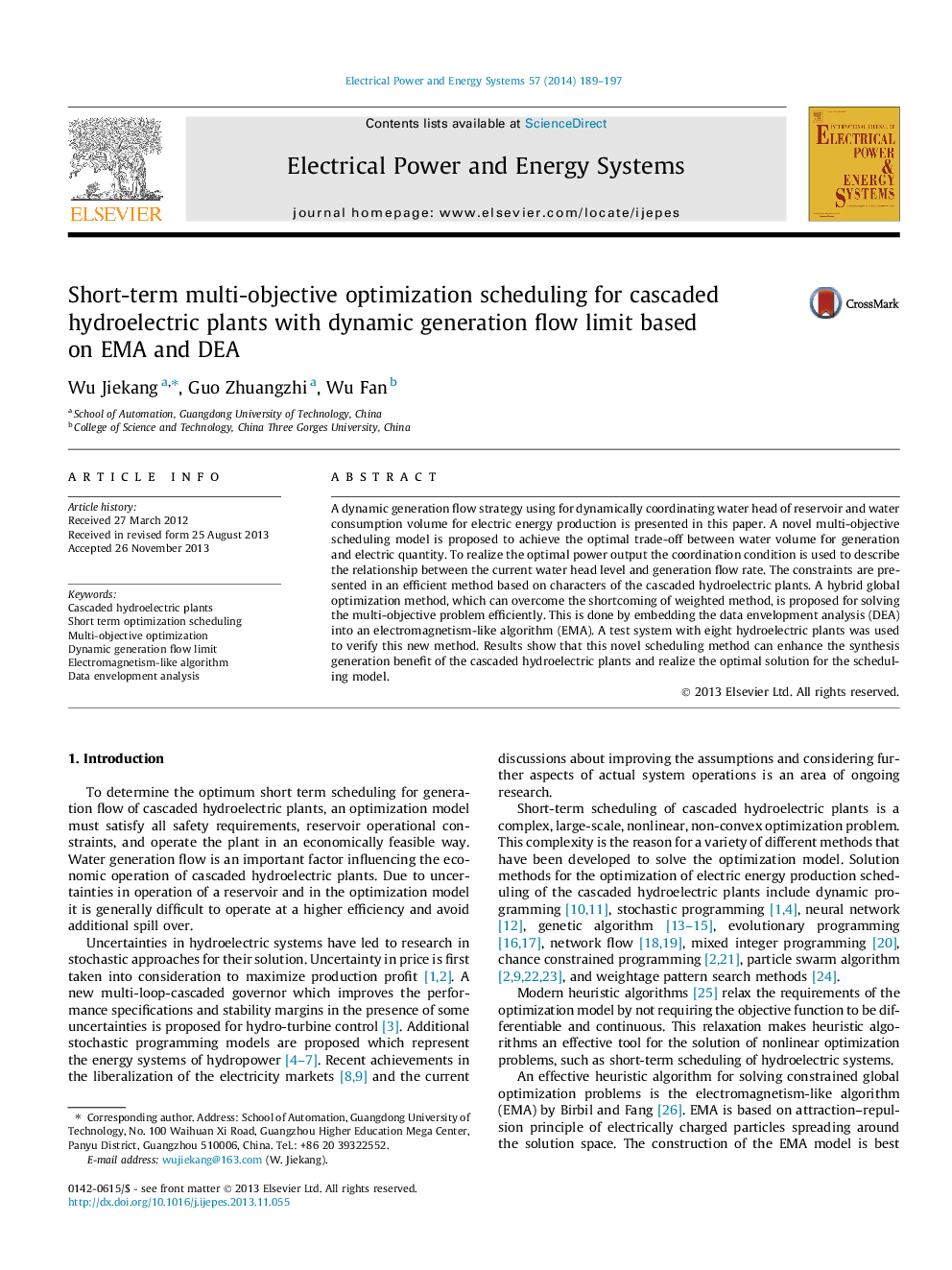| کد مقاله | کد نشریه | سال انتشار | مقاله انگلیسی | نسخه تمام متن |
|---|---|---|---|---|
| 399387 | 1438743 | 2014 | 9 صفحه PDF | دانلود رایگان |

• Static generation flow strategy is good for single objective optimization.
• Dynamic generation flow strategy coordinates dynamically water consumption.
• DEA method is used to coordinate the performance of all objective functions.
• A hybrid method presents a new way to solve multi-objective optimization problems.
A dynamic generation flow strategy using for dynamically coordinating water head of reservoir and water consumption volume for electric energy production is presented in this paper. A novel multi-objective scheduling model is proposed to achieve the optimal trade-off between water volume for generation and electric quantity. To realize the optimal power output the coordination condition is used to describe the relationship between the current water head level and generation flow rate. The constraints are presented in an efficient method based on characters of the cascaded hydroelectric plants. A hybrid global optimization method, which can overcome the shortcoming of weighted method, is proposed for solving the multi-objective problem efficiently. This is done by embedding the data envelopment analysis (DEA) into an electromagnetism-like algorithm (EMA). A test system with eight hydroelectric plants was used to verify this new method. Results show that this novel scheduling method can enhance the synthesis generation benefit of the cascaded hydroelectric plants and realize the optimal solution for the scheduling model.
Journal: International Journal of Electrical Power & Energy Systems - Volume 57, May 2014, Pages 189–197